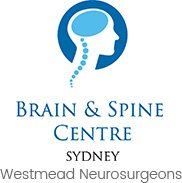Motion Preservation Spinal Surgery
Motion preserving surgery is one of the novel surgical methods to treat painful spinal conditions and restore the movements of the spine.
Spinal stenosis is one of the conditions that cause severe pain. The common treatment for spinal stenosis is spinal fusion surgery which involves permanent fusion of two vertebrae. Fusion surgery relieves pain but restricts the normal movement of spine such as bending, twisting or rotating. The spinal fusion surgery may also increase the risk of developing degenerative disc disease, nerve damage, pseudoarthrosis, facet arthropathy, spondylolysis, and spondylolisthesis. Motion preserving surgery serves an alternate treatment to the spinal fusion surgery where it alleviates pain and restores the normal movements of the joints.
Motion preserving surgery is a minimally invasive surgery that involves implanting specially designed interspinous constructs. These constructs are metallic or polymer implants that are inserted into the disc space and are secured to both sides of the vertebrae. The constructs increase the space between the vertebrae thereby relieve the pressure on nerves and also help to restore the normal motion of the spine in all directions such as forward, backward and sideward bending. Certain interspinous processes may limit the backward bending of the spine in full range as in normal conditions.
Motion preserving surgery using interspinous constructs can be performed in out-patient setting using mild sedative and local anaesthesia. Various types of interspinous devices are available in various sizes. Some of the devices used include:
- X-STOP - X-stop device consists of two titanium pieces. One piece is inserted under and next to the spinous process and the other piece is inserted opposite to spinous process and later is attached to the first piece. Certain clinical trials have shown that X-stop device provides significant pain relief as compared to epidural spinal injections.
- Wallis - It is used to treat mild to moderate degenerative disc disease and spinal stenosis. The Wallis implant has a bio-compatible spacer made of elastic polymer and two elastic bands. The spacer will be placed in between the damaged spinous processes and the bands are used to secure the spacer in place.
- DIAM - Device for Intervertebral Assisted Motion (DIAM) is a H-shaped implant made of silicon covered by polyester material. The H-shaped spacer is placed between the spinous processes which restores the height of disc and is secured with the two ligatures that run around the adjacent spinous processes as well the spacer.
- Coflex - It is a U-shaped implant with two wings on each side. The U-portion of the implant is placed in between the spinous processes and the wings are used to secure with adjacent spinous processes. It is used to treat spinal stenosis in the lumbar region and it allows controlled forward and backward bending.
- Stabilimax NZ - The device is inserted using pedicle screws and is attached to the screws fixed on adjacent spinous processes. The Stabilimax NZ system comprises of two springs, the inner spring helps in bending backwards and the outer spring helps in bending forward. It also allows bending sidewards with springs counter-opposing each other. The device also has a ball-and-socket arrangement which helps in twisting movement of spine.
- Porous Coated Motion (PCM) - It is used in patients suffering from cervical radiculopathy where the nerve roots in the cervical area are pinched and unable to perform the normal function. The PCM system has two end plates with a polyethylene spacer. The end plates are fixed to adjacent vertebrae and the spacer in between these plates. The interface between the two plates works as ball and socket movement allowing the patient to bend forward, backward, sideward and to rotate freely.
- Dynesys Spinal Stabilisation System - Dynesys is a small device which is inserted on both the sides of affected vertebra. It helps in stabilising the spine, allows the vertebra to take its normal position, relieves pain and restores the movement of the spine. It is comprised of alloy pedicle screws, tensioning cords and tubular spacers made of polymer materials.




